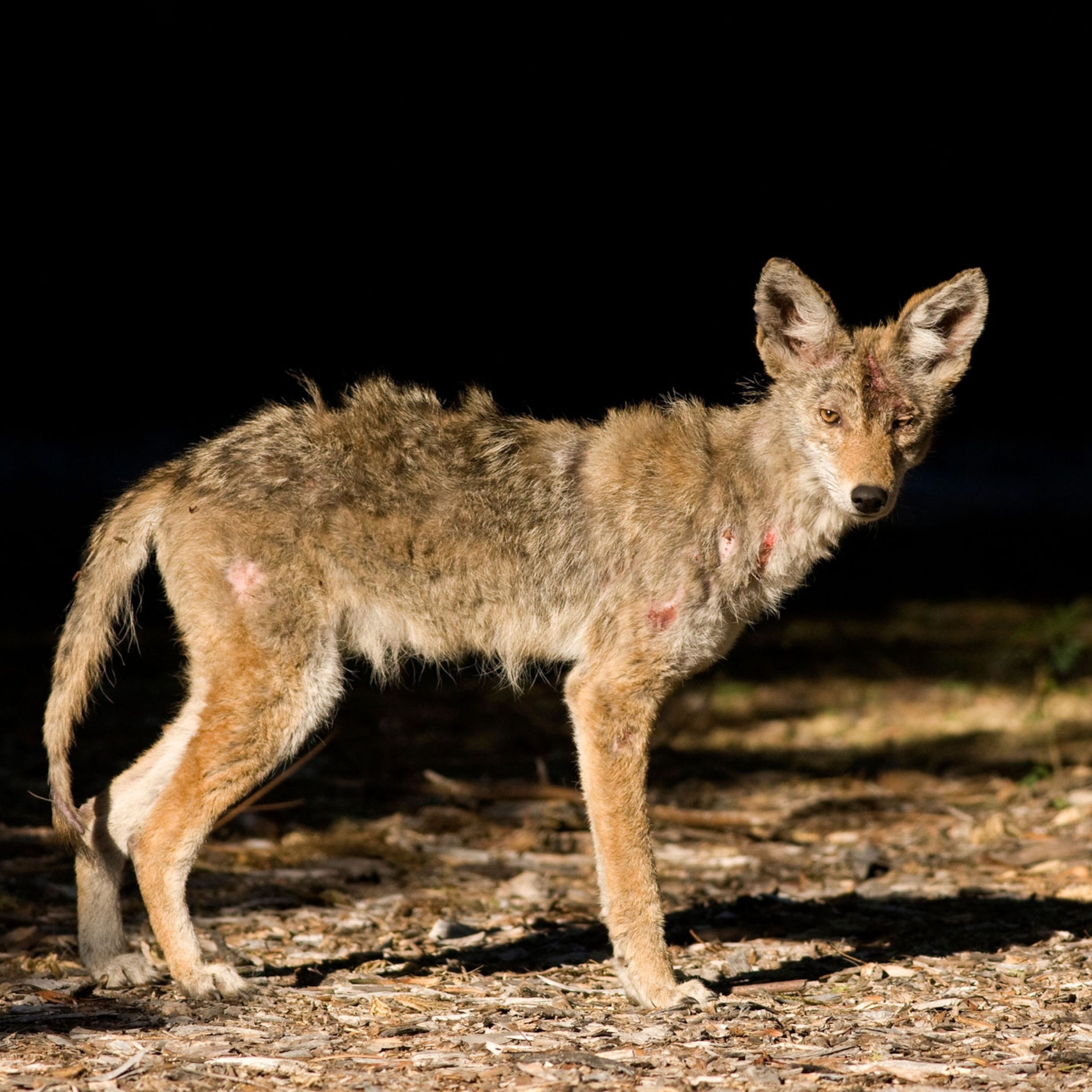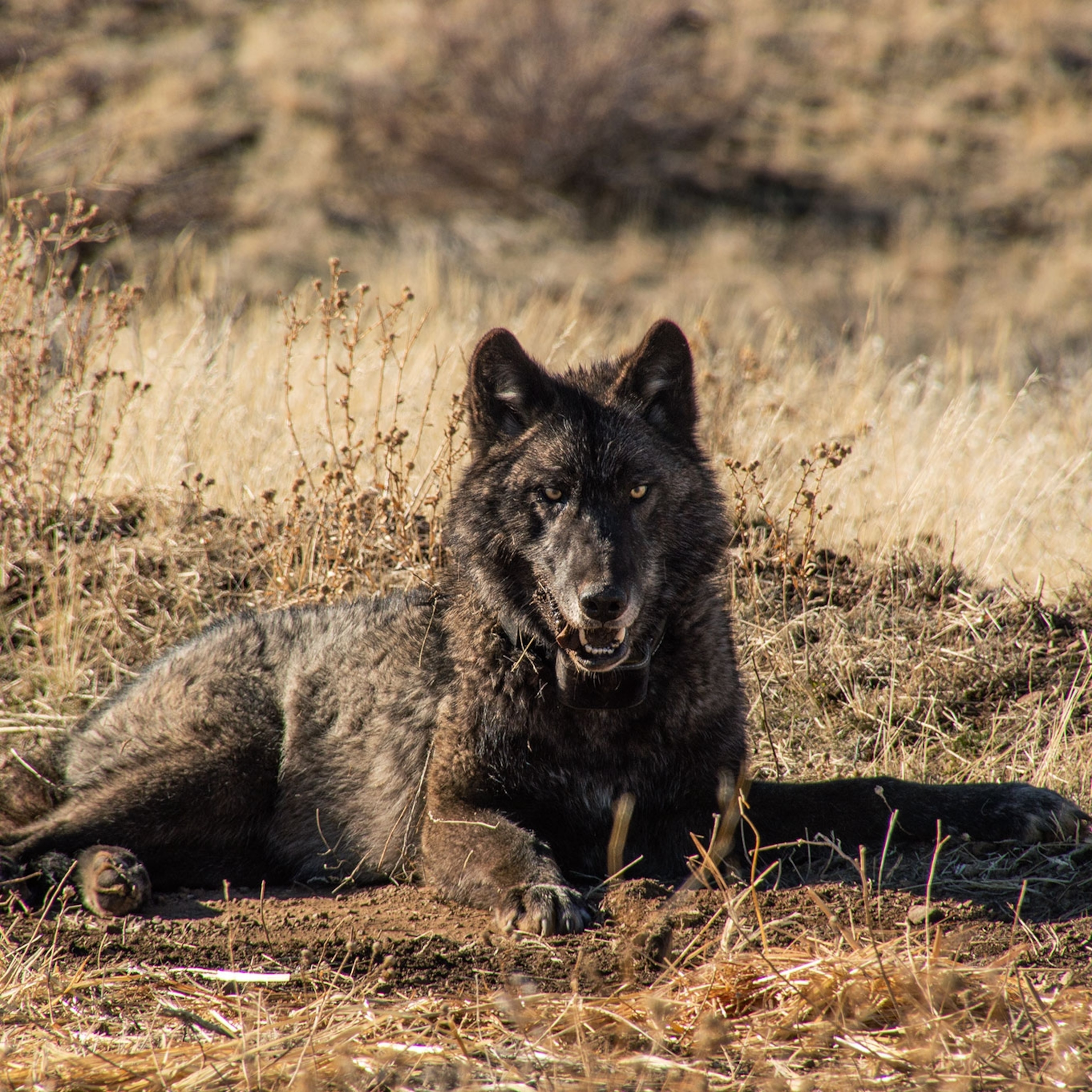Once ranging throughout the U.S. Southeast, Florida panthers nearly went extinct due to widespread hunting. By the 1970s there were fewer than 30 left. Though the endangered cats have rebounded significantly in the last couple decades, with a total population around 200, their future remains tenuous.
That’s why scientists are concerned about a newly discovered neurological disease that causes limb weakness, and in severe cases, partial paralysis, in Florida panthers and bobcats. Affected animals often have trouble walking, which can lead to starvation and death. Known as feline leukomyelopathy (FLM), the disease has likely afflicted 19 panthers and 18 bobcats throughout the state since spring 2017. An additional 11 cases have been confirmed—three panthers, eight bobcats.
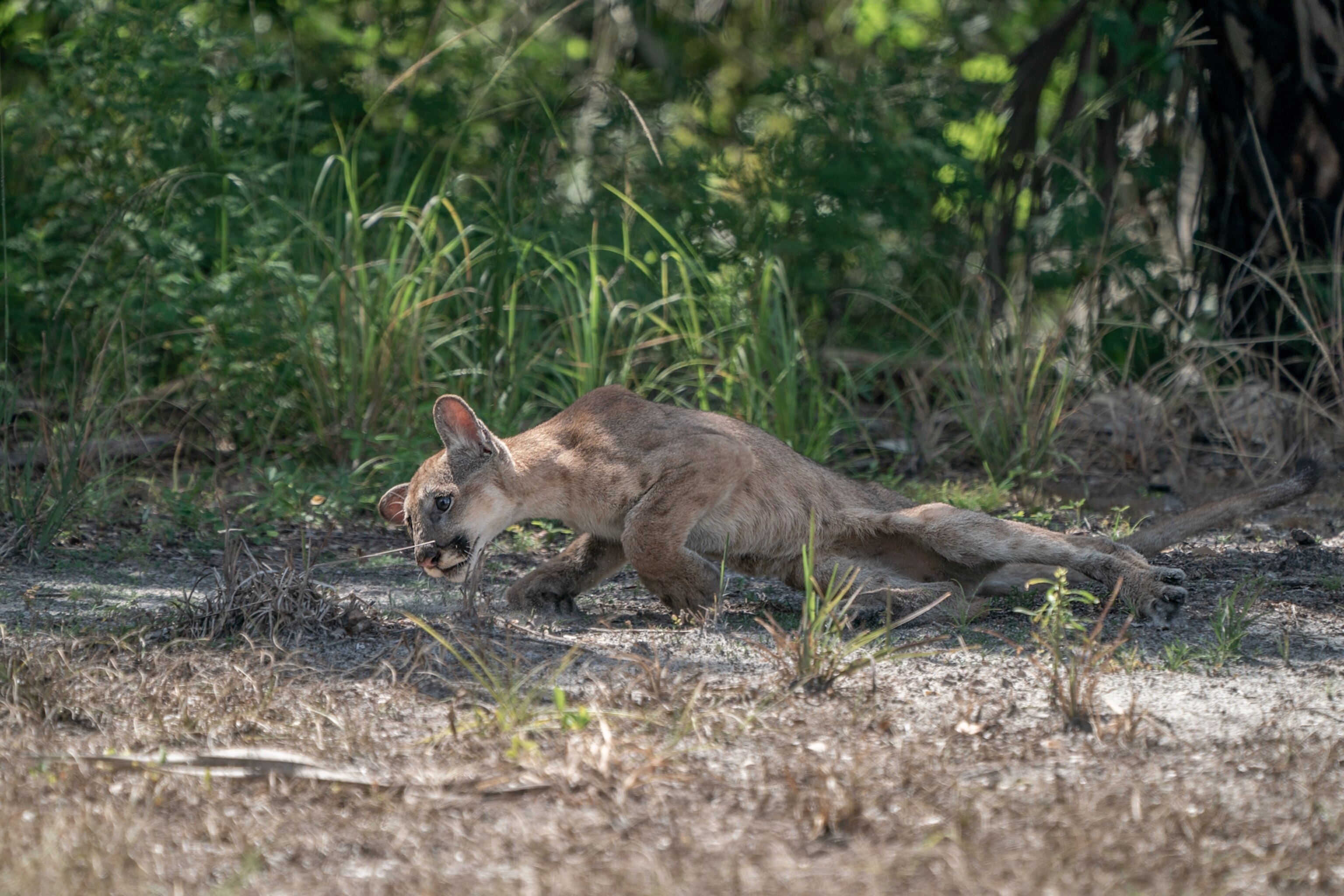
What’s causing the disease is unknown, says Darrell Land, panther team leader for the Florida Fish and Wildlife Conservation Commission.
“There’s no smoking gun yet. That’s a little bit disturbing, because you’d think if there were a simple answer, we’d have it already.”
Scientists’ best guess is that a neurotoxin is causing the disease. A pathogen such as a virus is also possible, though considered less likely. It could also be due to a combination of factors, such as a nutritional deficiency combined with a neurotoxin. Since the disease is found in at least two feline species, it’s not a genetic condition that’s passed down from parent to offspring.
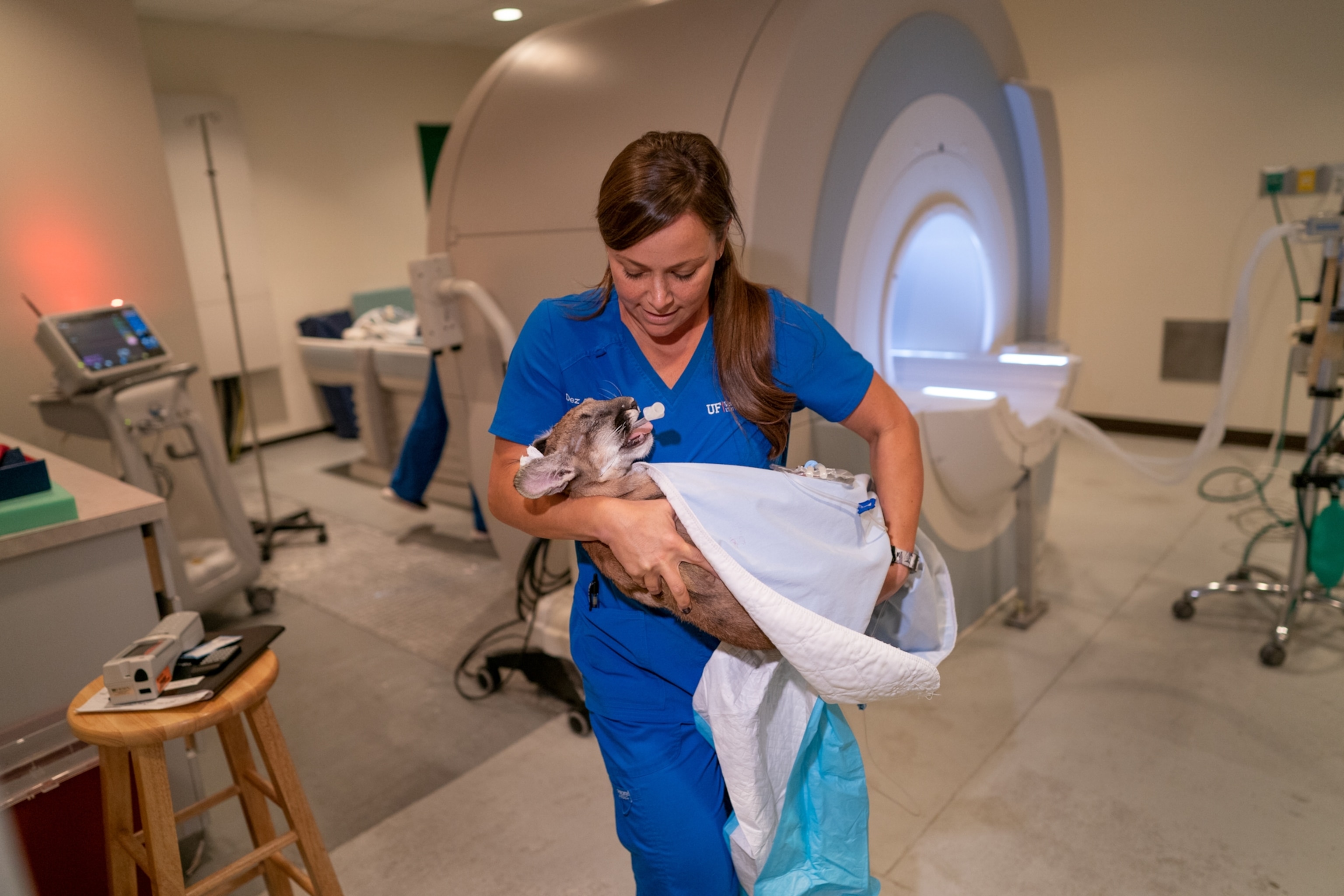
Researchers suspect the disease, characterized by damage to nerve cells, develops early in a panther’s life and does not generally worsen—or improve, says Mark Cunningham, wildlife veterinarian for the Florida Wildlife and Conservation Commission. In some areas the disease is affecting a significant percentage of panther kittens.
The FWC has made studying the disease an urgent priority, Cunningham says. A band of organizations, research institutions, and private citizens, including photographers with camera traps, are working together to pinpoint the cause, he says.
Panthers are already beset by multiple threats, including vehicle collisions, fatal fights over limited territory, and development. If the new disease “persists at this same level it’s very possible we could see impacts to the population,” Cunningham says.
“This is really an unprecedented event in wildlife, at least in felids,” or cats, he adds.
Alarming discovery
In early 2018, photographers Ralph Arwood and Brian Hampton captured videos of a panther mom who’d just given birth to three kittens in the Corkscrew Swamp area, an expanse of old-growth cypress forest north of Naples. But in mid-May, it became apparent something was wrong. Two of the kittens, both male, had trouble walking, with obvious weakness in their hind legs. Arwood alerted the FWC.
A couple months later, photographer and National Geographic Explorer Carlton Ward, Jr., encountered the panther mom while driving to a camera trap he’d set up nearby. It was a joyous moment—until he saw one of her cubs, dragging himself along the ground, while the mother waited for him. “It was crushing to witness,” he says.”One of the saddest, most helpless things I’ve ever seen.”
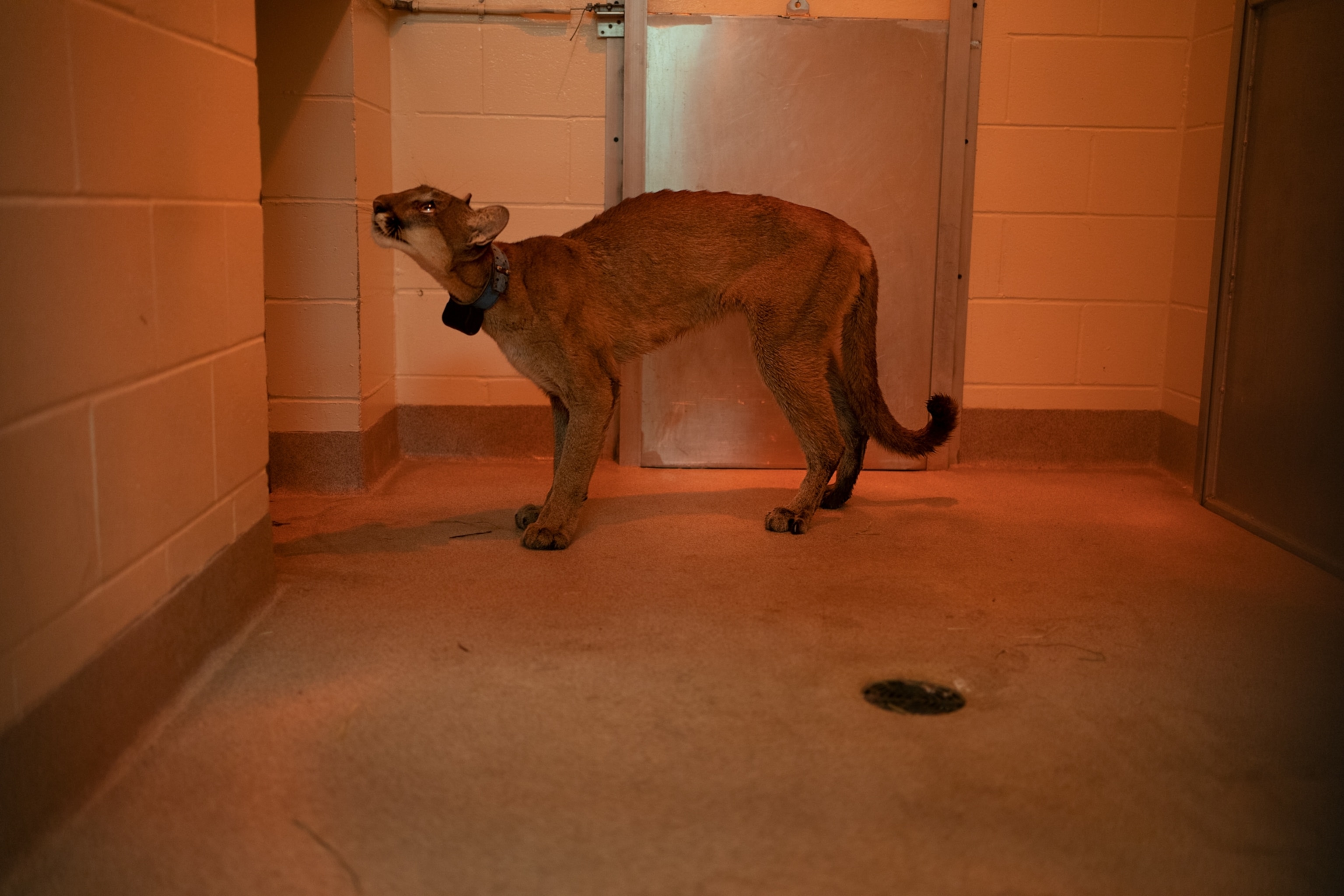
One of the kittens was not seen again and was presumed to have died, while the other one was fit with a GPS collar, which fell off after a few months, and his fate is unknown, Cunningham says. Several more probable cases of FLM have since appeared in panthers and bobcats in the Corkscrew Swamp area.
Retrospective analysis of camera traps turned up a presumed case of FLM in Babcock Ranch Preserve in April 2017, Cunningham adds, which would be the earliest known incidence. Probable cases consist of camera trap sightings of animals that are struggling to walk not explained by any other known cause; official diagnosis is difficult because it involves examining the spinal cord of recently deceased animals.
Of the three officially diagnosed cases in panthers, one is a female that gave birth to two kittens near Immokalee in summer 2019. She was seen on camera with severe weakness in her hind legs, and eventually the three cats were taken in by state wildlife officials, since it appeared likely all three would probably not survive. The kittens were examined by researchers with ZooTampa, and the mom was taken to University of Florida’s College of Veterinary Medicine.
The female was given various tests, including an MRI, a neurological workup, and blood tests, but nothing stood out that could explain her condition. By this point she could barely walk, and a panel of veterinarians made the tough choice to euthanize her. “It was a sad situation,” says Jim Wellehan, a veterinarian at the University of Florida who witnessed her condition. “You want to do everything you can to help.”
Luckily the kittens survived, now healthy adults living in a large enclosure at White Oak Conservation in northeastern Florida.
Missing axons
Necropsies of cats afflicted with FLM reveal they have severe damage to the spinal cord: It’s riddled with holes where the axons, or nerve fibers, should be, says Nicole Nemeth, a veterinary pathologist with the Southeastern Cooperative Wildlife Disease Study, a collaborative research group. Nemeth is a member of a growing circle of researchers helping to analyze samples from affected animals.
A toxic substance is likely killing off the axons, says Ian Duncan, a neurologist at the University of Wisconsin who has collaborated with the FWC. He’s an expert on disorders affecting the myelin sheath, the fatty layer that protects nerve fibers in a mammal’s central nervous system. Initially it looked like FLM may involve deterioration of the myelin sheath, but analysis of the dead panthers’ spinal cords showed that not to be the case.
So far researchers have screened several dead panthers for scores of toxic substances, including rodenticides, pesticides, herbicides, and heavy metals, but nothing definitive has turned up.
Duncan and others suspect a virus is a less likely culprit, since there is not meaningful evidence of inflammation, which would be expected with an infection, he says. Neurotoxins produced by naturally-occurring algae or some type of microbe in their habitat are another possible culprit that researchers are beginning to examine.
Felines in general—such as domestic cats, cheetahs, and leopards—seem slightly more susceptible to neurological diseases than other mammals, Nemeth says.
One more threat
“FLM is kind of a wild card at this point—we don't want to sound off the alarm bells too much but [it] could impact our progress toward recovery,” says Dave Onorato, FWC’s lead panther biologist.
The disease’s potential to disrupt the panther’s precarious progress underscores the need for the animals to move into new territory to insulate them against new and growing threats, Onorato says.

In particular, panthers must expand their range to the north, which is only possible if wildlife corridors are preserved. In 2016, for the first time in 43 years, researchers spotted a female north of the Caloosahatchee River, a major waterway near Fort Myers, which was a milestone for the animals. (Read more: How America’s most endangered cat could help save Florida.)
While many researchers are optimistic about the panther, some are very worried. “The future of the panther is very much in question,” says Deborah Jansen, a panther biologist with the National Park Service. “The panther is facing some really really big obstacles, especially this neurological disorder.”



